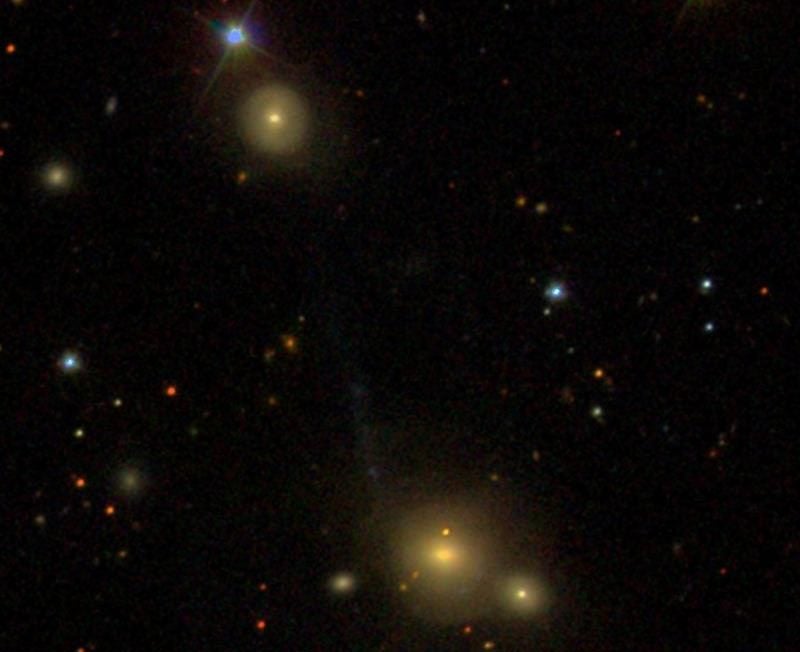
Halton Arp’s 1966 Atlas of Peculiar Galaxies was the first comprehensive effort to study and photograph unusual galaxies and galaxy groups that showed strange behavior. Arp raised fundamental questions about the nature of galaxies themselves. While our understanding of galaxies has improved since Arp’s time, many of these questions still perplex astronomers.
One of the weirdest entries in Arp’s atlas is Arp 103, also known as Zwicky’s Triplet. Arp 103’s nickname refers to Swiss astronomer Fritz Zwicky, whom Arp acknowledged as one of the colleagues who discovered some of the peculiar galaxies that he included in his study.
Zwicky’s Triplet is situated approximately 425 million light-years away, near the star 52 Herculis. None of the three galaxies in this system are listed as a group in the New General Catalogue or Index Catalogue. Instead, they have individual entries in the Catalogue of Principal Galaxies (PGC) published in 1989.
Arp 103’s brightest galaxy is PGC 59061, at 15th magnitude. Its southwestern flank is overlapped by PGC 59062, a smaller, fainter galaxy. A luminous tidal arm of intergalactic matter stretches in the opposite direction from PGC 59062 toward the group’s third galaxy, 16th-magnitude lenticular PGC 59065, 2′ to the north.
Initially, Arp believed that PGC 59061/2 was a spiral galaxy connected to elliptical galaxy PGC 59065 through a tidal arm of intergalactic matter. However, further analysis revealed that all three galaxies in Arp 103 are spirals. PGC 59062/5 are now tagged as S0 spirals, or lenticulars.









